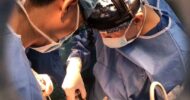How would you react if you sent your sputtering car to the auto mechanic, and they stopped trying to diagnose the problem after 15 minutes? You would probably revolt if they told you that your time was up and gave back the keys.
Yet in medicine, it’s common for practices to schedule patient visits in 15-minute increments — often for established patients with less complex needs. Physicians face pressure to mind the clock while they examine you.
That’s not to say that your physician “clocks out” as soon as your 1 p.m. appointment hits 1:15, or that all appointments last that long. What it does mean is that patients and doctors may be deprived of the opportunity for more meaningful discussions about the underlying causes of their problems and plans to improve them. A woman in her 50s who presents with high blood pressure and obesity might need medicine. But a longer conversation about the stresses of being the primary caregiver to her father, who has Alzheimer’s, could help provide strategies to help her look after herself.
When you see a new patient every quarter hour, there is often scant time to get to these root causes, to make accurate diagnoses, and develop the best treatment plans. And there is the danger that you miss a major diagnosis altogether.
The 15-minute appointment arose not out of evidence that it improves patient outcomes but out of production pressures: both the need to meet patient demand and to see enough patients to stay profitable.
Unpopular among patients, these production pressures have few fans among physicians either. A Mayo Clinic report stated that 54 percent of physicians meet the criteria for burnout in 2014 — up nearly 10 percent from three years earlier. Running on a treadmill all day in 15-minute sprints likely contributes to this phenomenon. Onerous documentation requirements and other pressures don’t help, either.
Some patient problems could be solved in 5, 10 or 15 minutes, but others cannot. What if health care trusted its physicians enough to take the time they need with patients and no more, and then monitored and paid for results? Could we realize better care while reducing costs, because patients are getting the right diagnosis sooner, and not coming back after their problem has been missed and their condition has worsened?
It’s not clear whether alternative payment models will achieve this. Concierge practices, in which patients pay a hefty annual fee in exchange for greater access to their physicians, may work well for those who can afford it. While this model is beyond the financial reach of many, a related model called direct primary care — or “concierge care for the masses” — is more accessible. Patients pay a monthly fee of anywhere from $25 to $85 to cover their primary care services, according to a Health Affairs report in December, and are encouraged to have insurance to cover more serious health issues. Patients and physicians might have 45 minutes to spend in an appointment. Because direct primary care usually does not bill insurance, it results in less checking boxes and more conversation.
A criticism of these models is that they may exacerbate the larger physician shortage, because physicians are responsible for significantly fewer patients than in a typical practice. Yet we need to evaluate their impact and see if their lessons might help us reclaim the patient-physician encounter.
Peter Pronovost is an anesthesiologist and director, Armstrong Institute for Patient Safety and Quality. He blogs at Voices for Safer Care. This article originally appeared in the Wall Street Journal’s blog, the Experts.
Image credit: Shutterstock.com
























![How to prepare for your death [PODCAST]](https://kevinmd.com/wp-content/uploads/Design-1-190x100.jpg)
